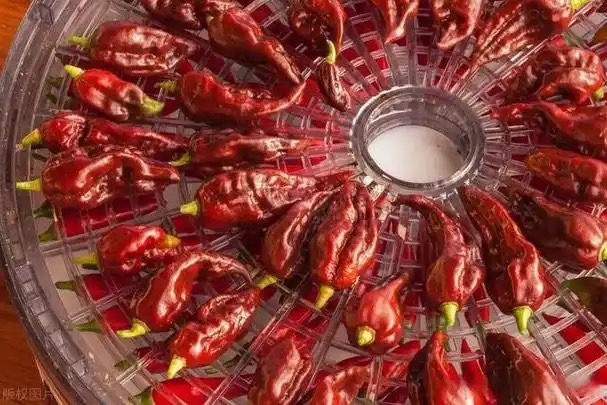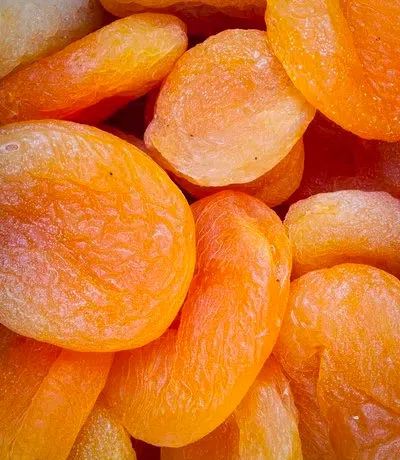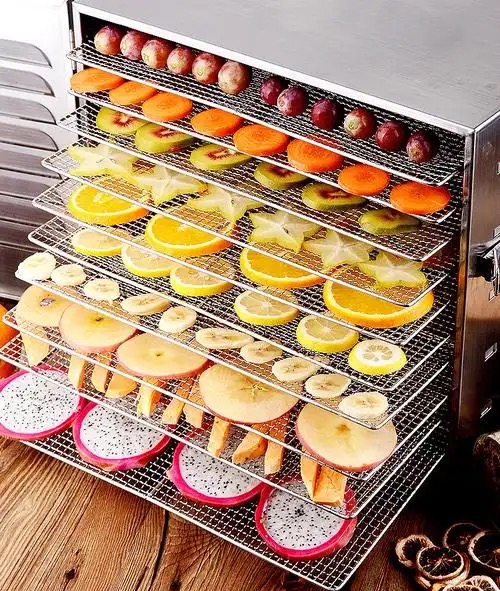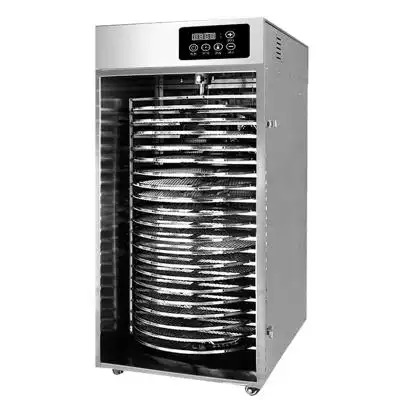
Content Menu
● Introduction to Food Dryers
● What Is a Heat Pump Dryer?
● How Does a Heat Pump Dryer Work?
● Advantages of Using Heat Pump Dryers
>> Energy Efficiency
>> Preservation of Nutritional Value
>> Versatility in Drying
>> Consistent Drying Results
>> Environmentally Friendly
● Applications of Heat Pump Dryers in Food Processing
● Key Features to Look for in a Heat Pump Dryer
● Maintenance Tips for Heat Pump Dryers
● Conclusion
● Frequently Asked Questions
>> 1. What is the primary benefit of using a heat pump dryer over traditional methods?
>> 2. Can heat pump dryers be used for all types of food?
>> 3. How does a heat pump dryer preserve nutrients in food?
>> 4. What maintenance is required for a heat pump dryer?
>> 5. Are there specific features I should look for when buying a heat pump dryer?
Introduction to Food Dryers
Food dryers, also known as dehydrators, are essential tools in the food processing industry. They are designed to remove moisture from food products, thus extending their shelf life and enhancing flavors. Among the various types of food dryers available, heat pump dryers have gained significant attention due to their energy efficiency and superior drying capabilities. In this article, we will explore the workings of heat pump dryers and their advantages in food processing.

What Is a Heat Pump Dryer?
A heat pump dryer is a sophisticated appliance that utilizes a refrigeration cycle to dry food products. Unlike traditional drying methods that rely on direct heat, heat pump dryers recycle air and use it to evaporate moisture from food items. This process not only conserves energy but also maintains the nutritional quality of the food being dried.
How Does a Heat Pump Dryer Work?
The operation of a heat pump dryer can be broken down into several key stages:
1. Air Intake: The dryer draws in ambient air from the environment.
2. Heat Exchange: The air passes through an evaporator coil where it absorbs heat from the refrigerant circulating within the system.
3. Moisture Evaporation: As the air heats up, it becomes capable of holding more moisture. This warm air is then circulated around the food items placed inside the drying chamber.
4. Condensation: The moisture-laden air is directed back to the evaporator coil, where it cools down and condenses into water, which is collected for disposal.
5. Recycling Air: The now-dry air is reheated and cycled back into the chamber, creating a continuous loop that efficiently removes moisture from the food.
Advantages of Using Heat Pump Dryers
Energy Efficiency
Heat pump dryers are known for their energy efficiency compared to traditional dryers. They operate at lower temperatures and recycle heat, which significantly reduces energy consumption. This makes them an ideal choice for businesses looking to minimize operational costs while maximizing productivity.

Preservation of Nutritional Value
One of the standout features of heat pump dryers is their ability to preserve the nutritional quality of food. The lower drying temperatures prevent degradation of vitamins and minerals, ensuring that dried products retain their health benefits.
Versatility in Drying
Heat pump dryers can handle a wide variety of food products, including fruits, vegetables, meats, and herbs. This versatility allows manufacturers to expand their product offerings without needing multiple types of drying equipment.
Consistent Drying Results
The controlled environment within a heat pump dryer ensures uniform drying across all food items. This consistency reduces the risk of over-drying or under-drying, which can affect product quality.
Environmentally Friendly
By utilizing less energy and reducing waste through moisture recycling, heat pump dryers are more environmentally friendly compared to traditional drying methods.
Applications of Heat Pump Dryers in Food Processing
Heat pump dryers are widely used in various sectors of the food industry:
- Fruit and Vegetable Processing: Dried fruits and vegetables are popular snacks and ingredients in many dishes. Heat pump dryers effectively remove moisture while preserving flavor and texture.
- Meat Processing: Jerky production requires precise moisture control to ensure safety and quality. Heat pump dryers provide an ideal solution for drying meats without compromising taste.
- Herb Drying: Culinary herbs need careful handling during drying to maintain their aromatic properties. Heat pump dryers offer gentle drying conditions that protect these delicate flavors.
- Snack Food Production: Many snack foods rely on dried ingredients for texture and taste. Heat pump dryers support efficient production processes for these items.
Key Features to Look for in a Heat Pump Dryer
When considering a heat pump dryer for your food processing needs, it's essential to evaluate several key features:
- Temperature Control: Look for models with adjustable temperature settings to cater to different types of food products.
- Humidity Control: Advanced humidity control options can enhance drying efficiency by monitoring moisture levels within the chamber.
- Capacity: Choose a dryer with sufficient capacity to meet your production demands without sacrificing quality.
- Energy Efficiency Ratings: Check for energy ratings that indicate how efficiently the dryer operates compared to other models on the market.
- Ease of Cleaning: A design that allows for easy cleaning will save time and maintain hygiene standards in your facility.
Maintenance Tips for Heat Pump Dryers
To ensure optimal performance and longevity of your heat pump dryer, consider these maintenance tips:
- Regular Cleaning: Keep filters and coils clean to maintain airflow and efficiency.
- Check Seals: Inspect door seals regularly to prevent air leaks which can affect performance.
- Monitor Performance: Keep track of drying times and product quality to identify any potential issues early on.
- Professional Servicing: Schedule regular servicing with qualified technicians to address any mechanical issues promptly.
Conclusion
Heat pump dryers represent a modern solution for food drying needs in various industries. Their energy efficiency, ability to preserve nutritional value, versatility, consistent results, and eco-friendliness make them an attractive option for manufacturers looking to improve their processes. By understanding how these machines work and what features to consider when purchasing one, businesses can make informed decisions that enhance productivity while delivering high-quality dried products.

Frequently Asked Questions
1. What is the primary benefit of using a heat pump dryer over traditional methods?
The primary benefit is energy efficiency; heat pump dryers recycle air and operate at lower temperatures, leading to reduced energy consumption while preserving nutritional quality.
2. Can heat pump dryers be used for all types of food?
Yes, they are versatile enough to dry various foods including fruits, vegetables, meats, and herbs effectively.
3. How does a heat pump dryer preserve nutrients in food?
By operating at lower temperatures compared to conventional drying methods, heat pump dryers minimize nutrient degradation during the drying process.
4. What maintenance is required for a heat pump dryer?
Regular cleaning of filters and coils, checking door seals for leaks, monitoring performance metrics, and scheduling professional servicing as needed are essential maintenance tasks.
5. Are there specific features I should look for when buying a heat pump dryer?
Key features include temperature control settings, humidity control options, adequate capacity for production needs, energy efficiency ratings, and ease of cleaning design elements.












